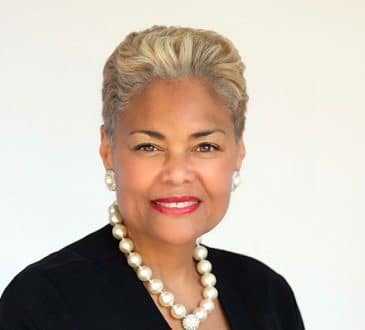Hey CEOs: Now What?

The world is watching to see what actual progress CEOs will make on diversity and inclusion. On May 25, 2020, George Floyd, an African American man living in Minneapolis, MN was murdered by police. He was accused of using a counterfeit $20 dollar bill to buy cigarettes. Police used extreme force in his arrest, with one officer kneeling on his neck for 8 minutes and forty-six seconds, until he was unconscious and in cardiac arrest.
Floyd wasn’t the first black man to be killed by police, but he was one of the first to have his murder captured on film – a video that went viral, with millions (if not billions) of people around the world watching as the four officers showed absolutely no concern for the life of another human being, taunting him as he took his last few breaths.
You’d have to be living under a rock not to have seen the resulting action: daily protests demanding justice for Floyd, calls to defund the police, and employers around the world promising swift change to address inequities that have existed for centuries.
Statements were made: Amazon, the NFL, Ben & Jerry’s, and global law firm Dentons (to name a few) all spoke out, denouncing the death of Floyd and showing their support for Black Lives Matter. It got to a point where it was more telling to see who hadn’t made a statement, than who had. The silence from some has been deafening.
There have been many promises made and calls of hypocrisy. YouTube committed to spend $1 million on social justice initiatives but immediately came under fire for its weak moderation efforts to tackle racism on its platform. Cries of “too little, too late” have been loud and frequent.
At the end of it all, one question remains: NOW WHAT?!
Racism isn’t new. Police brutality isn’t a case of a few bad apples. Exclusive behavior has existed as long as behavior has existed. If you’re just waking up to realize that not everyone is treated the same, welcome to the reality of what millions of people experience every day of their lives.
What’s new is that people are paying attention, and important (read: wealthy) people at that. Yet we have yet to see the real tangible results of all those lofty promises. Admittedly, this work takes time to show results, but if there is such a commitment, what immediate actions have these companies taken?
4% of JPMorgan Chase’s executive and senior leadership are black, and CEO Jamie Dixon lit up the internet by taking a knee as a statement of solidarity with Black Americans, but what is JPMC actually doing to improve things? Have they established targets for the promotion of women, people of color and other marginalized groups into leadership? Do they have a program to ensure they succeed on those targets? Where is the concrete action?
The NFL has apologized for not listening to its players about racism. At the first game of the newly relaunched NBA, every player, coach and referee took a knee, yet Colin Kaepernick – the former San Francisco 49er who was vilified for taking a knee to protest police brutality, and released from his contract in 2017 – remains unsigned.
Ben & Jerry’s may deserve the bragging rights (3/6 of their board appear to be people of colour and 4/6 appear to be female), but their parent company Unilever can’t say the same, based on the photos of their board and executive. Unilever’s Chief Diversity and Inclusion Officer, Aline Santos Farhat, is also the company’s Global Executive Vice-President of Marketing. That is not a judgement of her, the company’s commitment or D&I efforts, but being a Chief Diversity and Inclusion Officer is a job unto itself.
People are not impressed by hashtags and platitudes on social media. The time has come for concrete action that lead to change. Consider these tangible deliverables which will result in measurable results:
- Set targets and develop a plan to achieve them.
Setting targets for the hiring/promotion of women, people of colour and other marginalized groups into your leadership team is a great first step. But you need an actual plan to make that happen. It will involve mentoring, sponsorship and a lot of education. - Conduct an assessment and a strategy to address identified issues.
You need to know what the problems are, and the only way to do that is to do the work. Conducting some form of D&I assessment or audit helps you understand what the issues are, after which you can develop a strategy to address those issues.\ - Allot appropriate resources and money.
Diversity and inclusion work is just that – work. It requires people to do the work (ideally starting with an executive-level position with accountability for D&I within the organization), and financial resources to get things done. You can’t get something from nothing.
The gauntlet has been dropped, and the challenge is before CEOs to step up and commit to concrete actions that will result in tangible change. The question is, what are you going to do to be part of that change.
Commentary by Michael Bach. Here’s what you’ve missed?
World’s Most Stressed-Out Cities For Employees.
World’s Best Destinations For Business Travelers.
World’s Most (And Least) Expensive Cities For Taxis.
Bring the best of the CEOWORLD magazine's global journalism to audiences in the United States and around the world. - Add CEOWORLD magazine to your Google News feed.
Follow CEOWORLD magazine headlines on: Google News, LinkedIn, Twitter, and Facebook.
Copyright 2025 The CEOWORLD magazine. All rights reserved. This material (and any extract from it) must not be copied, redistributed or placed on any website, without CEOWORLD magazine' prior written consent. For media queries, please contact: info@ceoworld.biz











